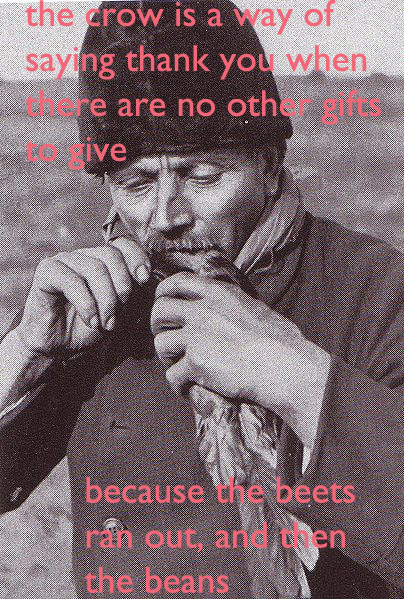March 20, 2010
My Baltics body of work has become a big nest, with many eggs. Here is one from the “warbirds” egg – a companion piece to last month’s carrier pigeon picture. Last time it was a Purim picture, and this one is for the Vernal Equinox.
 This image is a sketch for a seriograph I’m planning to do next week, and the text is from a short story I’ve been writing about a pagan woman in a village on the Curonian Spit of Lithuania. She sort of time travels between pagan days (up to the 20th century) and the years of Nazi occupation of the Curonian Spit (1938-1945).
This image is a sketch for a seriograph I’m planning to do next week, and the text is from a short story I’ve been writing about a pagan woman in a village on the Curonian Spit of Lithuania. She sort of time travels between pagan days (up to the 20th century) and the years of Nazi occupation of the Curonian Spit (1938-1945).
Last summer, a Lithuanian friend introduced me to the beauty and sadness of the Curonian Spit, where beyond the dunes the earth is still pocked with square pits left over from the Nazi tanks. These remains are sinister, with a very deadly sense of stillness.
And in the same forests – sometimes right in the tank depressions – there are carved statues of pagan deities and folk creatures who seemed to promise that the earth’s memory went back far deeper than mortals could remember. It was comforting to think of these ferocious goddesses enduring despite, despite, despite…
Much of my preoccupation in this project deals with various Jewish and familial experiences in that region, and yet much is in humble conversation with the other expunged people, the ancient pagan tribal peoples who resisted Christianity into the 20th century. In a Vilnius museum, I was unexpectedly shocked into tears to see the piles of intimate personal items dug up from these burial mounds and exposed for public view.
My twenty-one foot installation from Lithuania’s Kryzniu Kalnas was my first encounter with a pagan burial mound and goddess worship site with many centuries of abominations atop it (not the least of whom the Soviets) and now occupied by the Catholic church. This cycle of extermination – resuscitation – extermination exists in most places on the globe, but in Lithuania there is a tangibility to the phantoms of who used to be, and then were destroyed. I would prefer for the Lithuanian Jews and Pagans end up on the resuscitation side of the cycle.
Perhaps the dead peoples talk of the commonalities of desecration? While the particulars are quite different and nothing is comparable to the Shoah, the result is that the two strongest and most vibrant pagan cultures and Jewish cultures of Europe were destroyed. A loss of human civilization’s giant Lithuanian spiritual elders.
If these dead speak, there would be some old and powerful spirits in the conversation.
I remember my friend Sam – may his memory be a blessing – who was the only survivor in his village. When I mentioned to him that members of my family spoke Yiddish, he broke into an overwhelming stream of precise questions that I later discovered were an attempt to find anyone else still alive who spoke his particular village dialect.
In Latvia, the crow is forbidden as food because the pagan burials offered the dead on tall wooden platforms to be eaten by the holy birds. Is that why they allowed an SS veterans’ parade to pass through Riga last week in commemoration of their wartime achievements? Because the Latvians are unfamiliar with the taste of crow?
There is a phrase in English – EATING CROW. Having been proved wrong after taking a very firm stand, being humiliatingly incorrect, and the horrific taste that leaves behind. We imagine that kind of shame and error tastes like crow.
This particular picture dates from Lithuania in the early 1940s, where by some accounts starving villagers ate crows, and a local social currency spread up through their exchange. By other accounts, a long time-honored tradition of crow eating already existed here, even in the finest resort hotels. But these warbirds met a sorry fate.
I think of the substantial number of everyday Lithuanians of that era who were deeply complicit in the annihilation of their nation’s Jewish populations. And then, regardless, were later themselves annihilated by the Soviets…
This man – what is he experiencing as he eats his crow?
None of this is simple. And so, Spring begins, with a simple and unsimple pagan glory.
Happy vernal equinox to all: from here on, may the days get brighter.
(P.S. If anybody reading can direct me to additional information about the history of the Curonian Spit under Nazi occupation, please advise. q at quintanwikswo.com)
